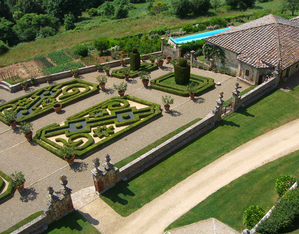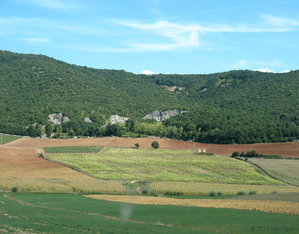A silent garden and its adjacent hunting ground where the only sounds to be heard are the wind, the water and the birdsong. The absence of noise becomes music blending in with the garden space and the large terraced lawns fading into the surrounding landscape.
Originally a castle with an agricultural estate, Villa Celsa was transformed into a residence with its adjacent garden during the Renaissance. Architect Baldassarre Peruzzi (1481-1537) is credited in particular with the small elegant circular chapel and the terraced garden towards the valley, interspersed with travertine vases and clusters of citrus fruit trees. The Medieval castle, with its Renaissance alterations, was incorporated into a perspectival and symmetrical layout: the construction of a new wing created an internal courtyard closed off by a wall with three elegant portals opening out to the surrounding landscape. Flanked by rural buildings, the access road leads to the castle, while elegant fanned-out cotto and travertine steps lead to the courtyard. From there you reach the Renaissance walled garden embellished with fine seating, built-in wall fountains, and boxwood beds with the heraldic rakes and stars of the Aldobrandi crest followed by a semi-circular basin bordered by a balustrade. At the sides of the garden are two buildings: on the left is the lemon-tree orangery, adorned with Lady Banks “Alba Plena” roses. East of the castle there is a second elaborate baroque garden: a long avenue lined with topiary-worked cypress trees leads to a fish pool, decorated with river gods, sea animals and travertine urns. From here you reach the vast “selvatico” park area.



